Batteries - NiMH Vs LiPo - Which is better?
NiMH Vs LiPo Batteries - Which is better?
There are 2 main types of batteries in the hobby industry: NiMH (Nickel-Metal Hydride) and LiPo (Lithium Polymer or more correctly Lithium-Ion Polymer). When you buy an RTR (Ready To Run) RC (Radio Controlled) car it’ll most likely come with a NiMH battery (if at all) as they’re fairly cheap, reliable and safe compared to LiPo batteries.
Most people will eventually upgrade to LiPo after getting used to running their RC car or buggy on a NiMH battery.
The main attractions to LiPo batteries are more speed, more “punch” off the line and more consistent power during the duration of the run compared to NiMH batteries.
List of RC Battery abbreviations
LiPo - Lithium-ion Polymer (type of battery)
NiMH - Nickel-Metal Hydride (type of battery)
NiCD - Nickel-Cadmium (type of battery)
Mah - Milliampere-hour (measurement of current over time) 1000Mah = 1Ah
Ah - Ampere hour (measurement of current over time) 1Ah = 1000Mah
A – Ampere (unit of electrical current)
ESC - Electric Speed Control (connects between the battery and motor)
S - Series (commonly used in LiPos eg. 3S meaning 3 cells wired in series)
V - Voltage (electrical potential)
C - Capacity rating (also known as discharge rating, higher the better)
NiMH Battery Pros & Cons
Pros
- Safe
- Reliable
- Smaller voltage increments
- Easy to maintain
Cons
- Bulky
- Heavy
- Lower energy density
- Inefficient
LiPo Battery Pros Cons
Pros
- High energy density
- Flat cell design
- High discharge rate
Cons
- Can be dangerous if handled incorrectly
- Require an ESC with LiPo Cut-off
- Require a balance charger
What Battery Do I Have?
Firstly, every battery should have a label that will say what chemistry (NiMH or LiPo), capacity (Mah - Milliampere hours, this is the high number) and of course, voltage (which will be a multiple of 1.2 for NiMH and 3.7 for LiPo) it is.
What Does a NiMH Battery Look Like?
A NiMH battery is a round cell that is available in many different form factors to suit your application.
Most of the NiMH batteries that power RC cars are made of multiple Sub-C sized batteries as shown in the images below.
If you haven’t already guessed it, the famous common rechargeable AA batteries are just a single NiMH cell.
Note: NiCD (Nickel-Cadmium) and NiMH batteries look pretty much exactly the same on the outside but they are very different internally and you need to treat them differently. I’m not going to talk about NiCD batteries as they are now out of date for the hobby industry as NiMH have a far superior “run time”, also competitively NiCD get affected by the “Memory effect”, for those reasons almost all electric RC cars use NiMH batteries instead of NiCDs.
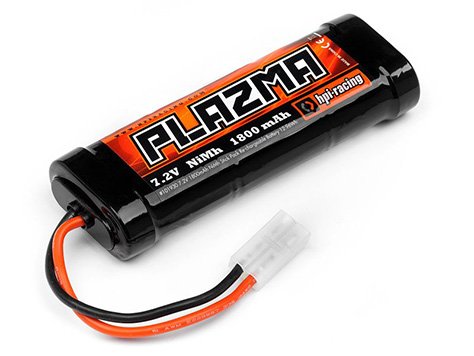
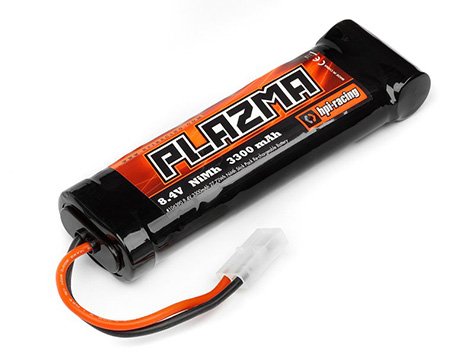
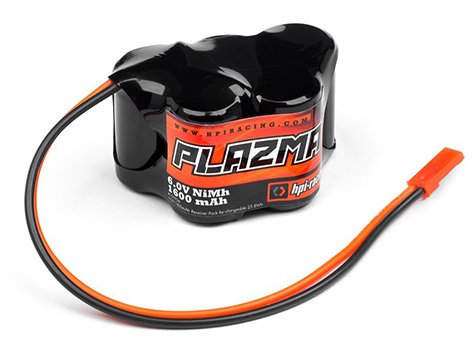
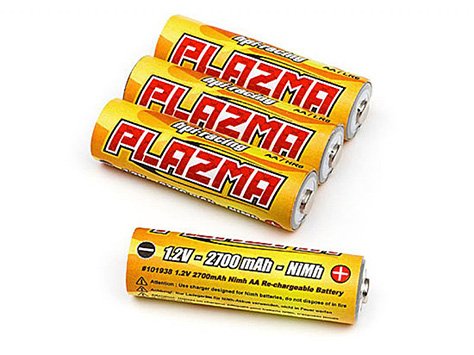
What Does a LiPo Battery Look Like?
A LiPo battery that has 2 or more cells in series has a balance lead, although this doesn't confirm that it's a LiPo battery it does confirm that it's a Lithium battery. NiMH batteries don't require a balance lead.
A LiPo battery cell is flat and rectangle in shape, there is no “standard” physical size for a LiPo cell, although a lot of RC cars have been designed to accommodate a 6-cell NiMH battery which is generally 137x45x234mm give or take a few millimetres, so this commonly gets called the “standard size”.
It’s good to also keep in mind that some cars even have a rounded mount to perfectly hug a 6-cell NiMH, in this case, you can get a rounded hard case LiPo battery.
So LiPos vary a lot in width height and length which is great, making to get a battery to fit perfectly in your RC car or any other application you’re using it for.
As we learnt with the relationship between voltage and cells in the NiMH batteries, LiPos are the same but the voltage for a single LiPo cell is 3.7v (not 1.2v like NiMH batteries) so the voltages available are reduced.
The 2 most common voltages for RC cars are 7.4v (2S) and 11.1v (3S).
Pictures
- HPI 11.1v (3S) 3200Mah 35C battery in a ‘Hard-Case’ making it a bit more durable and less likely to be punctured.
- Traxxas have made a nice little diagram of their LiPo batteries which is a very similar to most others.
- A single cell LiPo which is actually out of an Apple iPhone 3gs.
- HPI’s fireproof LiPo safe pouch, Hobbies Direct highly recommends using these when charging and storing any LiPo battery.
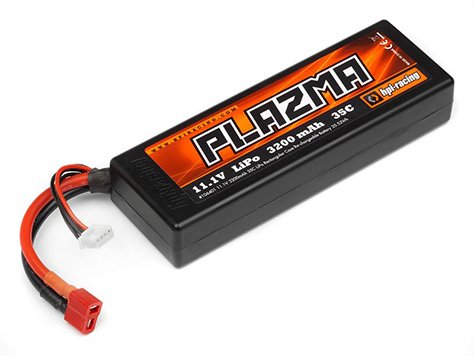
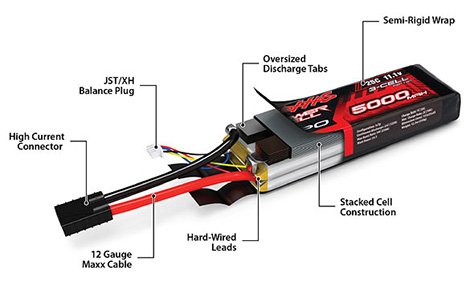
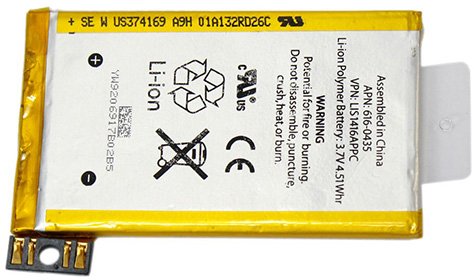
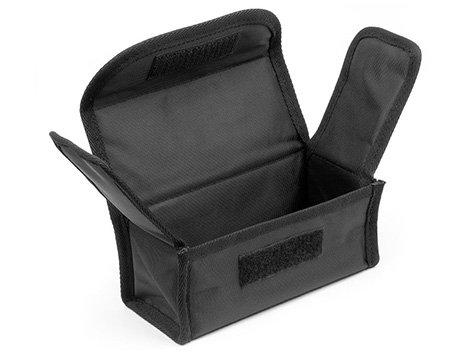
NiMH Batteries
There is a lot of information on the internet, as well as a lot of conflicting advice which can be very confusing, especially with “Memory Effect” which is only on NiCD NOT NiMH batteries.
“Voltage Depression” is something that NiMH can suffer but it’s debatable as to how noticeable it really is and following the instructions below will ensure that it won’t happen to your battery.
Charging
NiMH batteries will only charge properly on a charger that is specifically designed for NiMH.
NiCD only chargers will NOT charge NiMH batteries correctly.
A common question is “How fast can I charge a battery?”
One hour is safe for most batteries, which means a 2000Mah battery can be charged at a maximum rate of 2000Mah or 2Amps.
There are two main different styles of NiMH chargers, the most common (mainly because they’re cheaper) type is the “Trickle Charge” which is a low Mah output (at the right voltage of course) which doesn’t stop or cut off when the battery is full but because it’s just a low output it’s not enough current to do any damage to the battery, although, we highly recommend to disconnect once the battery is charged. You can easily calculate how long it’ll take by dividing the output Mah from the charger with the Mah capacity of the battery so let’s say the “Trickle Charger” puts out 500Mah and the battery is 2000Mah, 2000/500 = 4 (4 hours for a full charge).
This method is great for your battery and also uses more power than the “Delta Peak” method.
The other type of NiMH charger (the better type) is called “Delta Peak”.
When charging a NiMH battery with this method the charger knows when the battery is full and can stop charging, meaning it can charge at a much higher rate without overcharging the battery.
This is a much safer way of charging and it will also let you know when the battery is full, which is handy.
Discharging
Discharging is pretty much another word for using your car, as you drive the car is discharging the battery, although you can discharge it through a smart charger as well.
If you wish to get the most life out of your NiMH battery its best NOT to completely discharge your NiMH battery regularly in an attempt to make them last longer as this can actually shorten the life of the cells.
Storage
The best way to store a NiMH battery is at room temperature in a dry location.
Ensure that they don’t get too hot as heat can definitely reduce the life of your NiMH battery.
It’s best to charge your NiMH battery up before storing it, also going back to the battery charging it every so often (every 7-30 days or so) really helps as NiMH cell self-discharge about 1% a day so if you leave your battery for over 4 months your battery could be damaged beyond repair.
If you have LSD (Low Self Discharge) batteries you shouldn’t have to worry about this as much.
Disposal
Easy one, NiMH batteries are recyclable so be sure to recycle them.
Safety
Although NiMH, in general, is safer than LiPo batteries you can still cause some serious damage if incorrectly used or treated. Here are a few "dos and don'ts" to keep you NiMH in good shape.
Do charge in a safe, well-ventilated area.
Do try and use a quality smart charger.
Don’t leave a battery charging unattended.
Don’t charge on a non-NiMH charger.
Don’t charge over 1C (unless specified otherwise by manufacturer).
Don’t completely discharge regularly.
Don’t drop your NiMH battery as they can be affected easily by shock.
LiPo Batteries
As mentioned previously, LiPos need a bit more care than NiMH batteries if you want good life out of them, we will go over the main things to keep your battery nice and healthy.
Charging
Charging is the first thing you’ll need to do once you’ve purchased a LiPo battery. The first thing you’ll need to check is if the charger is compatible with your LiPo battery, this should be written either on the charger itself, the box, or the manual.
Once we know the charger is compatible with the battery you want to charge if you have a charger that is programmable you’ll need to know what the correct settings to charge your battery.
Let’s say we’re trying to charge the HPI LiPo 11.1v 3200Mah on the iMax B6AC V2 charger, you’ll need to set it to “LiPo CHARGE” with a charge rate of 3.2A and a voltage of 11.1V (3S), which should be very similar to most other chargers (a lot of the digital chargers have a very similar software).
So let’s take a look at those settings again, “LiPo CHARGE” is pretty simple as it’s a LiPo battery and you’re trying to charge it. 11.1v is pretty simple as well as the battery is 11.1v (3S) so that makes sense to set it to 11.1v (3S).
So we should set the charging rate to 3.2A, as at this rate it will take 1 hour to deliver 3200Mah to the battery which is a full charge.
This is the safe rule of thumb for pretty much all LiPo batteries.
This is called the ‘1C rule’ meaning you can charge a LiPo battery the same rate as its Capacity which in this case is 3.2A (if you had a 5200Mah battery you can charge it up to 5.2A safely).
Discharge Rating or “C” Rating
To ensure the battery can handle the power demands of your car you need to look at the LiPo’s discharge “C” (Capacity) rating. This rating is normally between 10-90C, let’s use the 11.1v 3200mah 35C LiPo battery for example (“C” Rating x Mah) 35x3200 = 112Amps, so if your car had an 80A ESC (Electric Speed Control) you know that this battery can handle more than the ESC will deliver which makes this a safe rating for the application.
Storage
Storage is a very important part of keeping your LiPo in good shape. If you store a LiPo battery flat or fully charged longer than 2 weeks it can drastically affect the performance and life of your battery, so what’s the answer?
All LiPo batteries like being stored at 3.70v to 3.85v per cell which is about 50-70% charged.
If your charger has a storage charge setting that will automatically charge (or discharge) the battery to the correct storage voltage and you’re not going to use the battery for longer than a week put it on storage charge.
If you don’t have a charger that can do this then put it on charge for half the time that it’ll normally take to fully charge the battery, this should get close to the right voltage which is much better than storing it flat or fully charged. Also, if you have a multimeter you can also check the cell voltage from the balance lead.
Disposal
If your LiPo battery has been damaged or will not charge anymore and you cannot use it, you’ll need to dispose of it. Of course, to do this you cannot simply put it in the bin as it can still be very dangerous.
To dispose of a LiPo battery correctly you’ll need to completely discharge it so it has no more power, making dangerous.
This is best done by simply connecting a low draw device (like a light bulb) until the battery is completely discharged. The time you need to leave it connected for will vary because of how charged the battery is and the capacity of the battery but typically this should only take a day or two to be sure.
Safety
We cannot recommend it enough to be safe as possible with LiPo batteries. We’ve heard many ‘horror stories’ about LiPos catching on fire, puffing and smoking. Although there are many possible causes for a LiPo battery to display these symptoms the 2 most common are over discharging (number one cause of LiPo death) and (more dangerous) overcharging.
To greatly reduce damage to your LiPo and everything near it ALWAYS use only a LiPo balance charger on the correct settings, NEVER use an ESC without a LiPo cut-off.
ALWAYS use a LiPo safe bag while charging and storing, ALWAYS store at the correct storage voltage.
As batteries are being used more and more all around the world, almost everything can be battery operated like phones, power tools and laptops. It’s rare these days that you go through a day without using a battery somewhere.
So it’s very important that we all know how to look after batteries because if you don’t, it can go seriously wrong.
